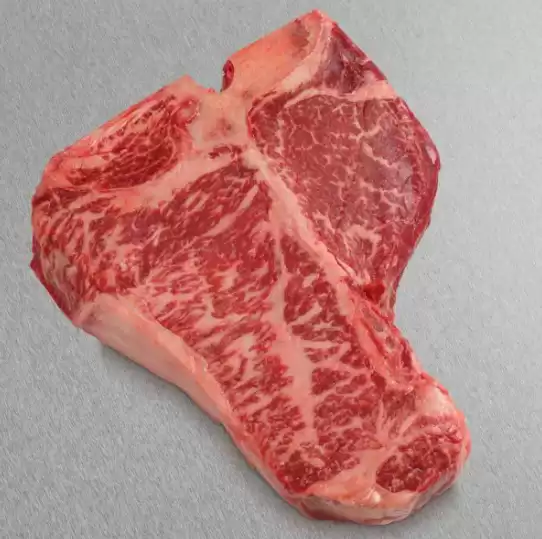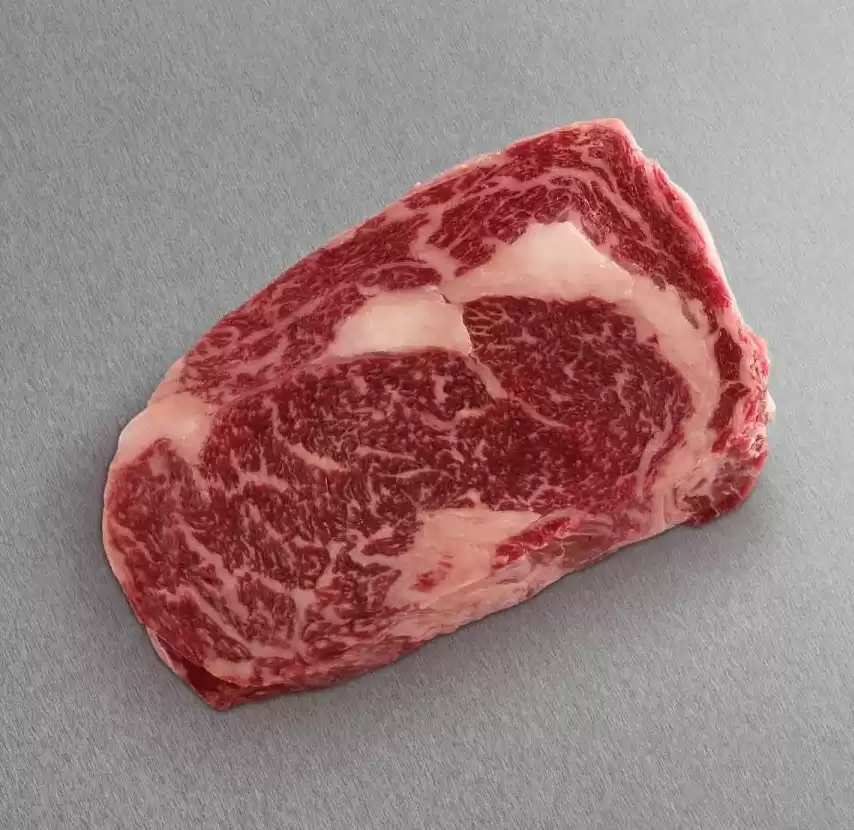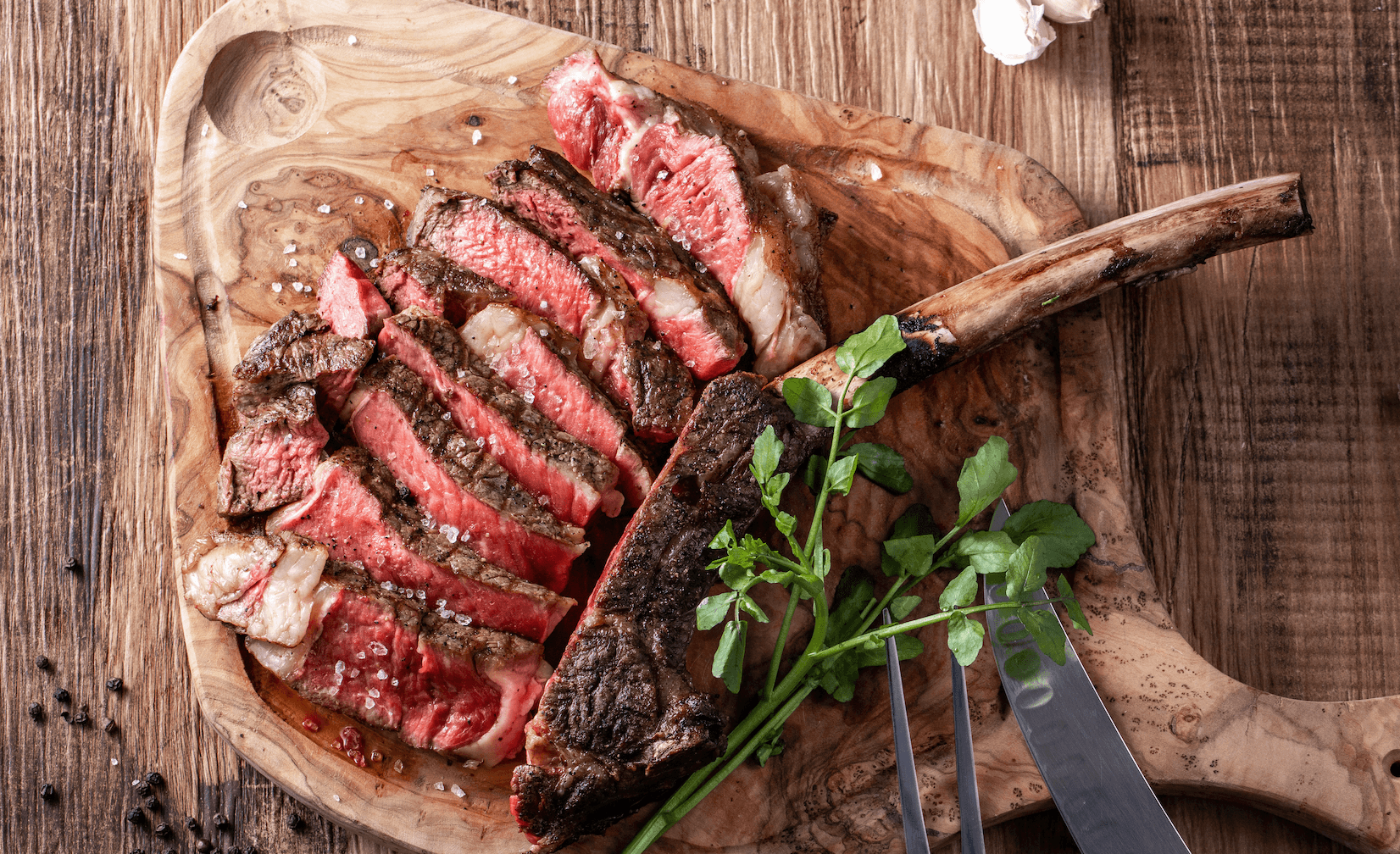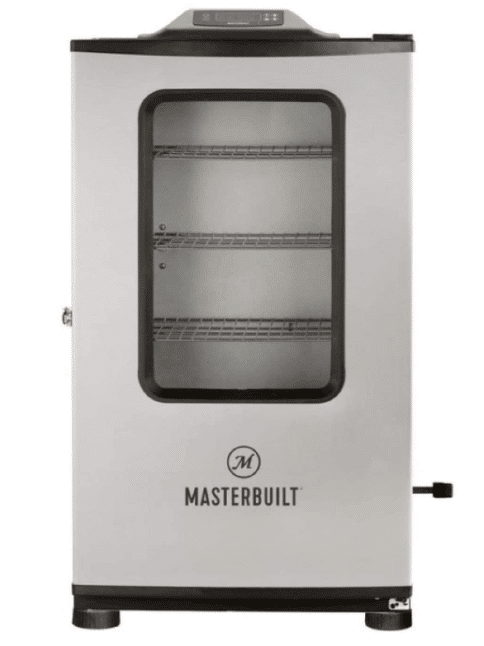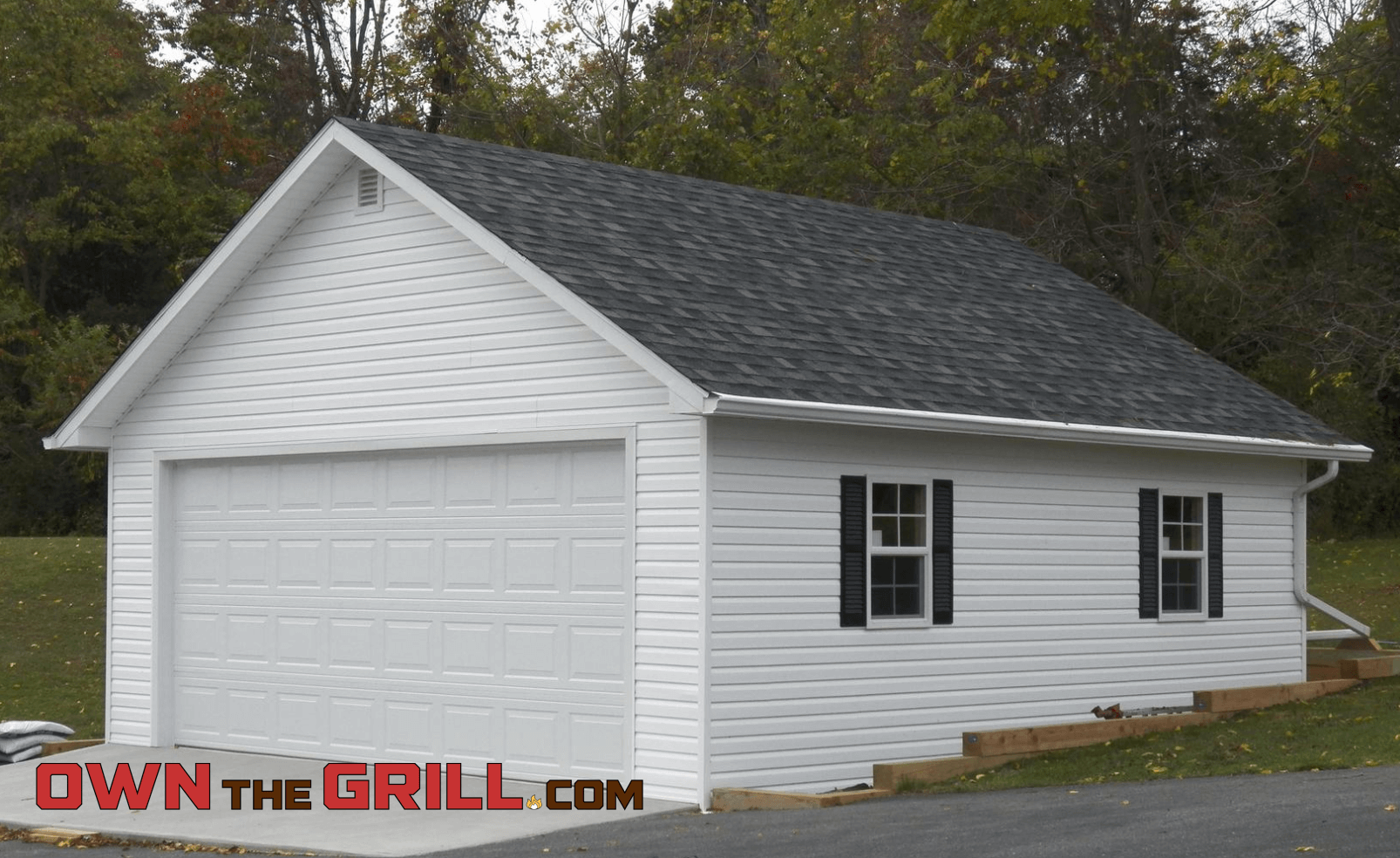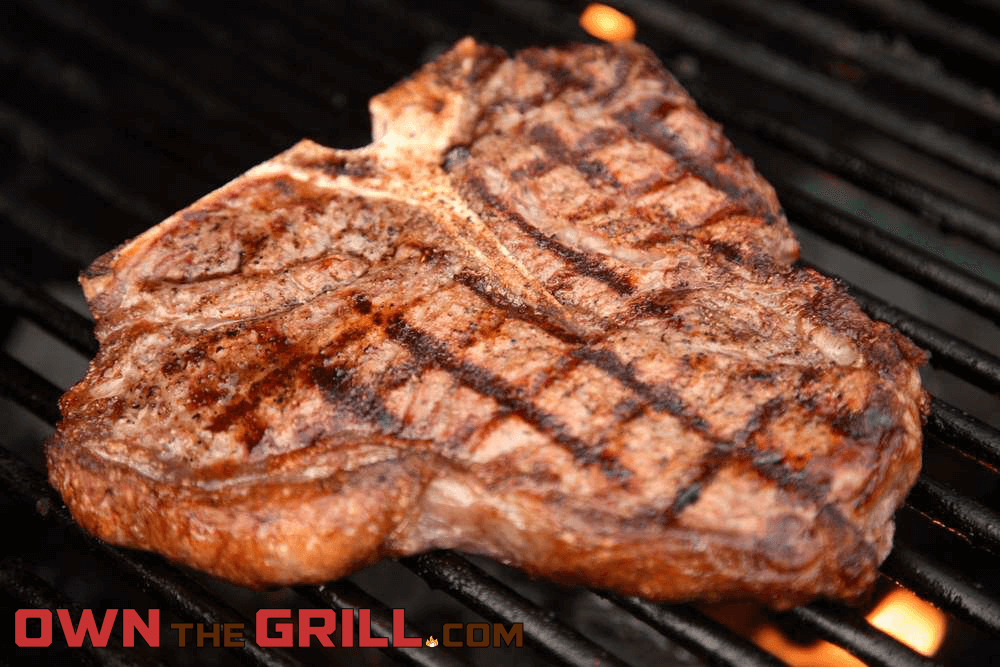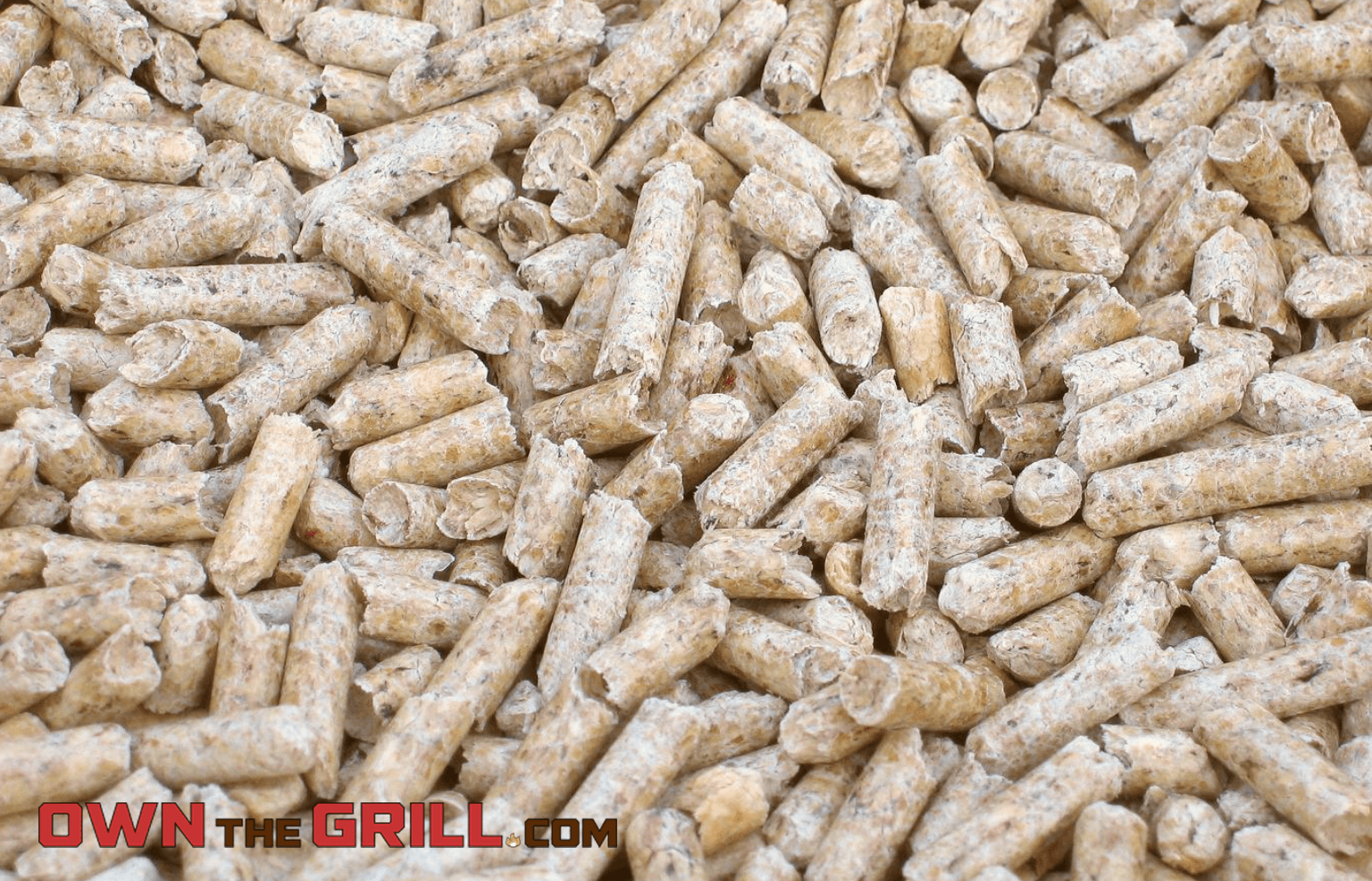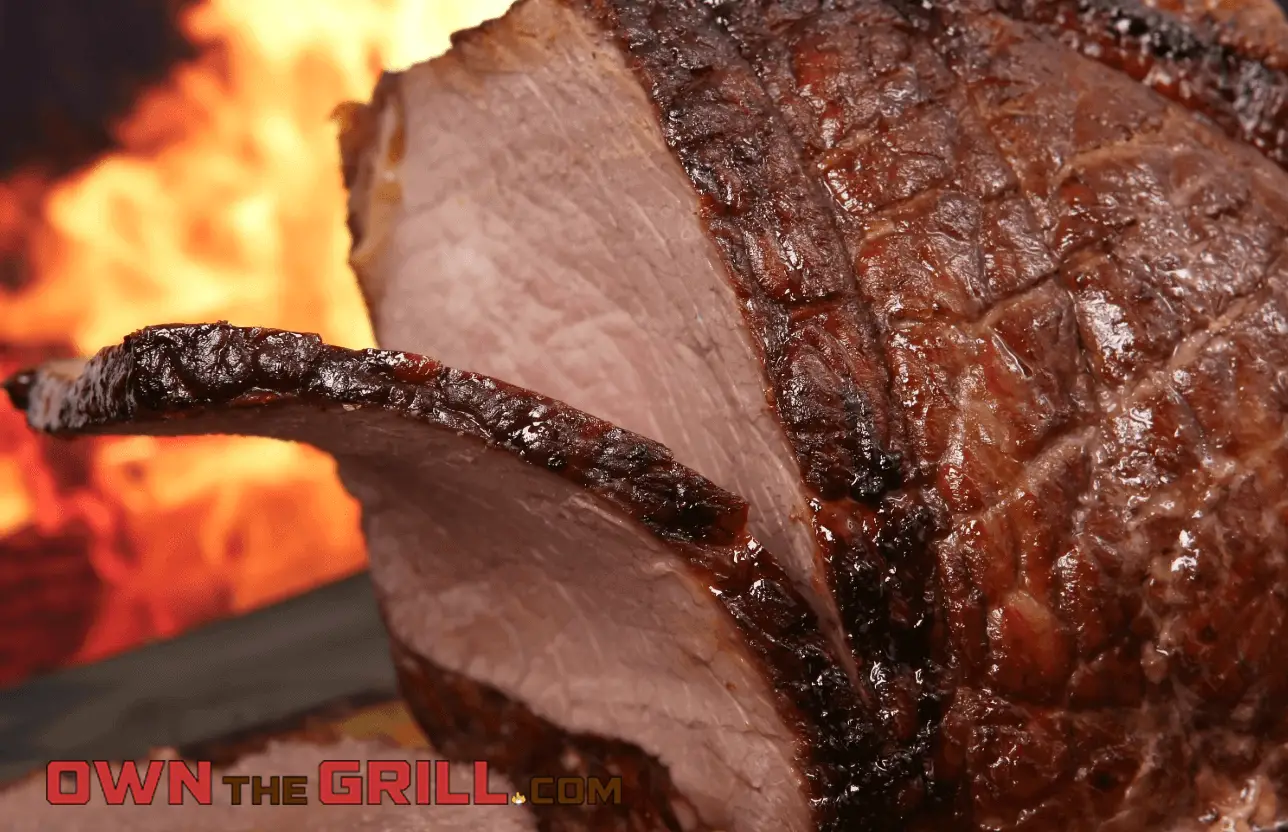This content contains affiliate links. If you make a purchase after clicking a link on this page, we might receive a commission at no cost to you.
Whether you’re laying down steaks on the grill yourself or heading out for a good dinner on the town, the best meal you’ll ever have started with the best cuts of meat and the highest-quality ingredients.
When it comes to choosing the best type of steaks, there are two that always come to the top of the list: Porterhouse and ribeye steaks.
Each one has a unique cut and history and makes a different type of meal depending on what flavor and texture you want to partake in when the meal is finished.
Before you head out to dinner or the grocery store for supplies of your own, let’s check out the difference so you can make the best decision!
Porterhouse vs Ribeye Steaks
Porterhouse Steaks
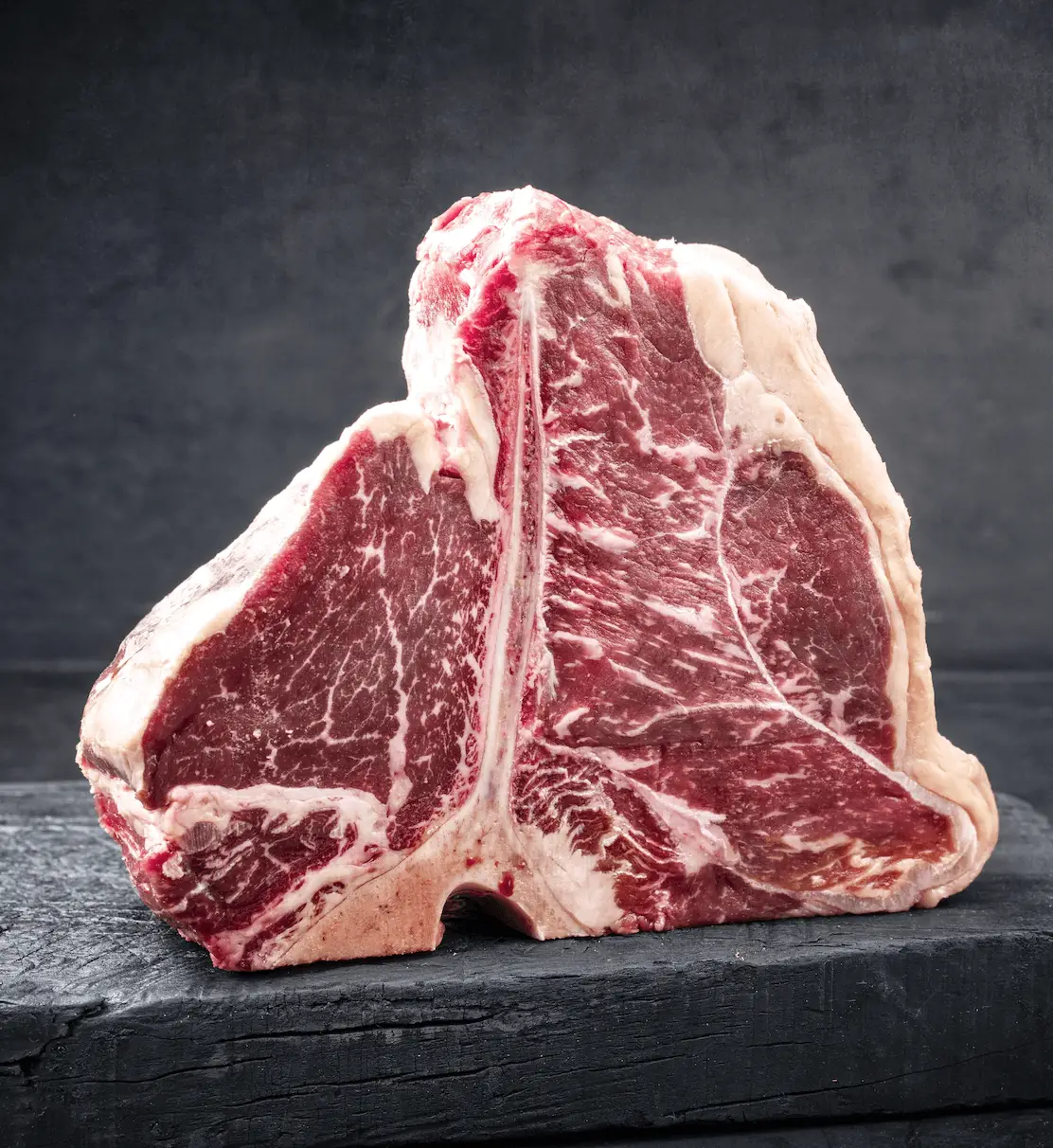
Let’s get down to the good stuff! Porterhouse steaks are cut from the loin, a tender and popular cut of beef that includes other cuts like the tenderloin, strip steak, T-bone, and of course, the Porterhouse.
The overall cut of steak that comprises the Porterhouse includes the part where the tenderloin and top loin meet.
By cutting it up and removing the bone that runs down the middle, you actually end up with a tenderloin steak and a New York strip steak. Together they’re considered the Porterhouse!
Preparation of a Porterhouse
The best way to cook a Porterhouse steak is on the grill. You can also use a broiler or cook it on the stovetop in a cast-iron skillet.
Start with only light seasoning and a large amount of salt and the final internal temperature should be cooked to medium or 145 degrees Fahrenheit at the most.
On the Grill
To cook a Porterhouse on the grill you’ll want to start with the grill hot so you’ll get a good sear on the outside of your steak. Cook it right up until the point before the fat would start to burn then flip it and repeat the process on the other side.
You can make it fancy by rotating your steak about 45 degrees to get the restaurant style diamond grill marks! Once you’ve got a good sear on both sides, you’ll move the steak to a cooler part of the grill where you can finish it to the desired doneness internally.
Before plating and serving your steak, you can add a pat of butter in the center. This will melt and bring out, enhancing the flavor of your steak before you serve it up to guests or for yourself.
On the Cast Iron
The other popular way to cook a porterhouse steak is on a cast iron skillet.
Do it right and your sear will be unbeatable – you just may need to finish the steak off in the oven to ensure the middle of the beef is at your desired doneness.
Porterhouse Steak Flavor Profile
The Porterhouse is a combination steak and brings out the flavor of both the filet and the loin when cooked upright.
Filets tend to be less flavorful but are very tender and the strip steak scores high on the rich beefy flavor that we associate with steaks.
High-quality Porterhouse steaks don’t need much for pre-grill seasoning or sauces and seasonings after it comes off the grill. The flavors and tenderness mix well together and make a great treat for anyone looking to grill up an excellent steak.
Buying a Porterhouse
There are a few key things you want to look for when buying a Porterhouse steak at your local meat market or grocery store.
Firstly, you’ll want to get a steak that is at least 1.5 inches thick. Some butchers will offer up thin cut steaks but they don’t keep the moisture or tenderness that the typical cuts will.
Porterhouse steaks should have a rich color without any gray on the meat. The fat along the edges and marbled throughout should be white and not yellow. Along the loin side of the steak, look for good marbling, the mixed in fat within the meat itself.
If you really want to treat yourself, Snake River Farms is our favorite purveyor of online beef. They sell USDA Prime and American Wagyu, both of which are spectacular. It’s a great choice for a big occasion or celebration.
The Gold Grade Porterhouse is a superior steak in every sense of the word. It’s cut from out most marbled American Wagyu beef for unparalleled juicy flavor.
A Quick Note on Porterhouse vs T-Bone Steaks
A Porterhouse and a T-Bone steak look very similar in style but there are a few key differences.
A Porterhouse is typically thicker overall and contains more tenderloin filet in comparison to the loin portion of a T-bone. The USDA keeps track of Porterhouses and the filet portion of the steak must measure at least 1.25 inches wide to qualify.
If you’re interested in the nuanced differences between the two, you can check out our more in-depth resource on the two here.
Ribeye Steak
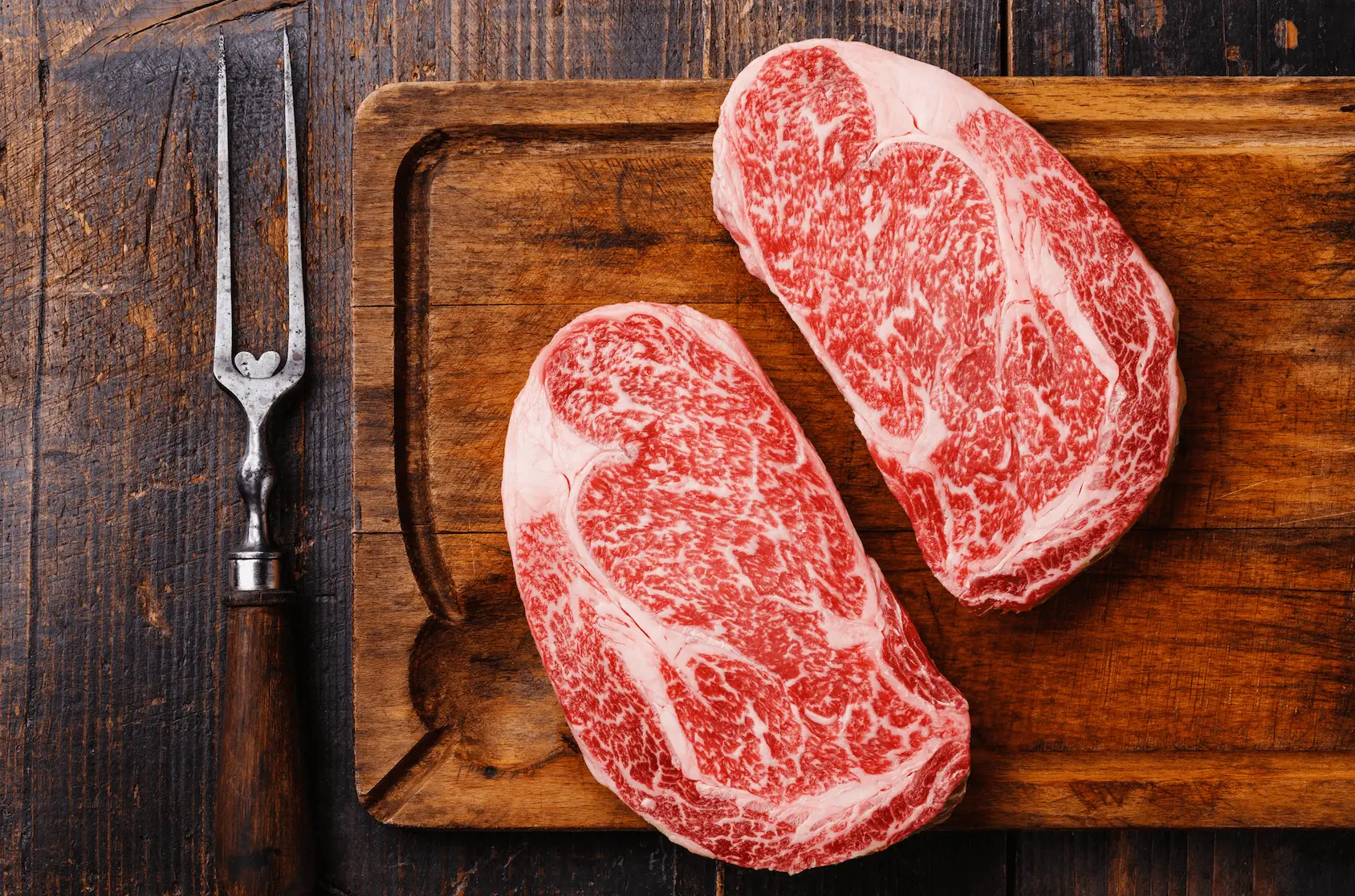
The ribeye is considered one of the best steaks on the market and is cut from the roast, the prime rib or standing rib roast that sits between the chuck and loin.
The ribeye is cut from the top of the rib primal and is the meat between the ribs – which can be sold as a bone-in or a boneless cut.
Preparation of a Ribeye
Overall the ribeye has a full flavor and soft texture that includes a large amount of marbling that gives it a rich taste and juicy finish!
This muscle isn’t used much when the bovine is alive so it stays soft and tender. Ribeyes are a good size and make an impressive dinner coming off the grill or from under the broiler.
On the Grill
For the most part, ribeyes are so flavorful that they don’t require much more than a pinch or two of salt to enhance the natural flavor. You’ll want to bring the steak up to room temperature before putting it under the broiler or on the grill and salted liberally.
Ribeyes have a much higher fat content than other types of meat and they often cause flare-ups while on the grill. You’ll want to keep a close eye on them as they only take a few minutes to cook to perfection.
Flip the steak every minute for four minutes to get the grill marks you want and bring the steak up from rare to medium-rare. If you want it done, even more, move it to a cooler part of the grill and finish cooking there!
On a Cast Iron
Similar to a porterhouse, a ribeye steak can be cooked beautifully on a cast iron skillet.
Get your cast iron ripping hot then place the steak on. It should sear up pretty quick – flip after 3-4 minutes until there is a lovely sear on both sides of the beef.
From there, check your internal temperature and if needed, finish it in a preheated oven.
Ribeye Flavor Profile
The closer the meat is to the head of the bovine, the more fat marbling there will be within the meat.
During the cooking process, this fat melts from the inside out and gives the meat lots of flavors and a buttery taste while keeping the meat itself tender during the cooking process.
Buying a Ribeye
While they’ve become rarer these days, you can still find a few reputable butchers in several towns and they’re the best place to find a quality, prime piece of meat.
But if your local butcher isn’t open anymore, you can often find a good ribeye steak at your local grocery store.
Ribeye tends to be a universal term but it may come under a lot of different names depending on where you live. It can also be known as a beauty steak, Delmonico steak, spencer steak, or a Scotch fillet in Australia and New Zealand. A rib steak is the same cut like a ribeye but includes the bone in the cut itself.
If you want to shop online, the Gold Grade Ribeye from Snake River Farms is one of my favorite cuts of meat on the planet, period. You can read more about that experience in our Snake River Farms Review.
Rem5 Farms is also a great choice for farm to table ribeye steaks – it’s a family run farm with high quality offerings at an excellent price point.
Snake River Farms' top of the line ribeye steak is hand cut to 1.5" thick.
Getting the Most Out of Porterhouse and Ribeye Steaks
Buying yourself or your family some high-quality steaks is an investment and you don’t want to be throwing away burned steaks once or twice a week.
Instead, you can start with some hints and tips to be sure that whether you choose or porterhouse or a ribeye steak you’ll be sure to pull the perfect steak off the grill every time!
Thawing
Freezing your recently purchased steaks will keep them fresh but before you slap them on the grill you’ll want to be sure to have them thawed thoroughly.
If you run out of time or forgot to get them out of the freezer the night before, they can be thawed under cold water in your sink to get them ready for the grill. If possible it’s best to avoid grilling frozen steaks.
One of the easiest ways to get a good start on the perfect steak is to bring your steaks up to room temperature before putting them on the grill.
Colder steaks take longer to cook and they may not hold the seasoning as well as a room temperature steak. 30 minutes is about all it takes to bring the steak up to temperature.
Seasoning
When you start with a great, flavorful steak like a Porterhouse or ribeye, you won’t need loads and loads of fancy seasoning that overwhelms the natural flavors of the beef. The easiest and most flavorful option is just sea salt and ground black pepper.
Start by seasoning your steaks about 30 minutes before it’s intended to go on the grill. This gives the salt time to work its way into the beef and break it down further to create more flavor.
You can use a specific seasoning if you want a more intense flavor but for the most part, these flavorful steaks are great with just salt and pepper.
Get the Grill Ready
Whether you’re cooking on gas or charcoal, the heat is what matters! You’ll want to have high heat in one area of the grill and low heat in another.
Let your grill pre-heat so the grates are hot when you add the steaks. Before heating things too hot, brush your grates with oil, get it hot and add your steaks.
Let Your Steaks Rest
Before your steaks reach the requisite temperature for doneness, take off the grill about 5 degrees low for a rest and a breather. Pull the steak off the grill and plate it up.
The internal heat will continue to cook the steak for a few more minutes and the juices will redistribute through the meat. This also gives your meal a little bit of time to cool so you can eat it and enjoy it without burning your mouth!
Why Cuts Like Porterhouse & Ribeye Are So Popular
There’s little that’s more iconic or quintessentially American than throwing a couple of beef steaks on the grill and inviting family and friends over to relax in the backyard. The obsession of most people across America with beef has a long history for nearly every meal.
In the early days of the American West, beef was the only staple for most farmers, ranchers, and cowboys who made their living in the wild. Cattle were readily available to be butchered and the steaks became one of the easiest cuts to cook over an open fire.
The thinner meat cooked quickly without losing all of its flavors and the cut didn’t need to be processed heavily so it made an easy choice while out on the trails.
Throughout the ensuing years, steaks have been elevated to a cultural delicacy and have found their place on the grills of backyard chefs throughout the United States. The simple cook time and the inherent flavor have kept them popular throughout the years!
Final Thoughts
Porterhouse and ribeye steaks are both quality cuts of meat that blend tenderness and flavor throughout the entire cut of meat.
While the Porterhouse is a combination of two different parts of the beef with a bone in the middle, the ribeye is cut from between the ribs and is boneless.
The ribeye has greater marbling while the Porterhouse has a combination of tenderness and flavor that’s hard to beat.
Start with a good cut of beef, season it slightly, and let it rest after hitting the grill and no matter the type of steak you buy at the grocery store, you’ll have a meal fit for a king!


